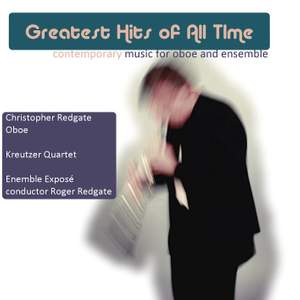Works for oboe and strings (either string trio or quartet) form a considerable part of the oboe's historic repertoire. Works first appeared in the 1750s and by the 1770s were very popular. Over 100 works survive from this period; the most famous being the Mozart Oboe Quartet in F K370. It is not, however, until the 20th century that works are once again written for this ensemble, many for the renowned British oboists Leon Goossens and Janet Craxton. Surrounding these figures a substantial body of music for oboe and string trio or quartet has been written, the most well known work being Britten’s Phantasy Quartet op 2. The works for oboe and strings represented on this CD, while in many ways being part of this great tradition, offer significantly different ways of writing for the ensemble; taking different compositional and stylistic approaches to the music and particularly in their writing for the oboe. These various approaches demonstrate the potential of this medium; its artistic and aesthetic range. Of the other three works, Finnissy’s two pieces present the oboe as a soloist with an ensemble accompaniment and Redgate’s Éperons for oboe and one percussionist offers a different approach to writing for the instrument in a chamber music setting. Since his time as a student at the Royal Academy of Music, Christopher Redgate has specialised in the performance of contemporary oboe music. This specialisation has inspired many composers to write for him and as a result he has given premiere performances of a great number of works. His performing career has taken him all over the world, working as a soloist and in many ensembles. His performances frequently include the use of electronics and especially of the laptop computer and for many years now he has been including improvisation as a significant part of his recitals. He has been active as a teacher both of oboe and in workshops for composers. He broadcasts regularly for BBC R3 and has several solo CDs available. He has recently contributed three articles to an edition of Contemporary Music Review, is working on a book on the interpretation of contemporary oboe music and contributing a chapter in a new book on the music of Michael Finnissy.





